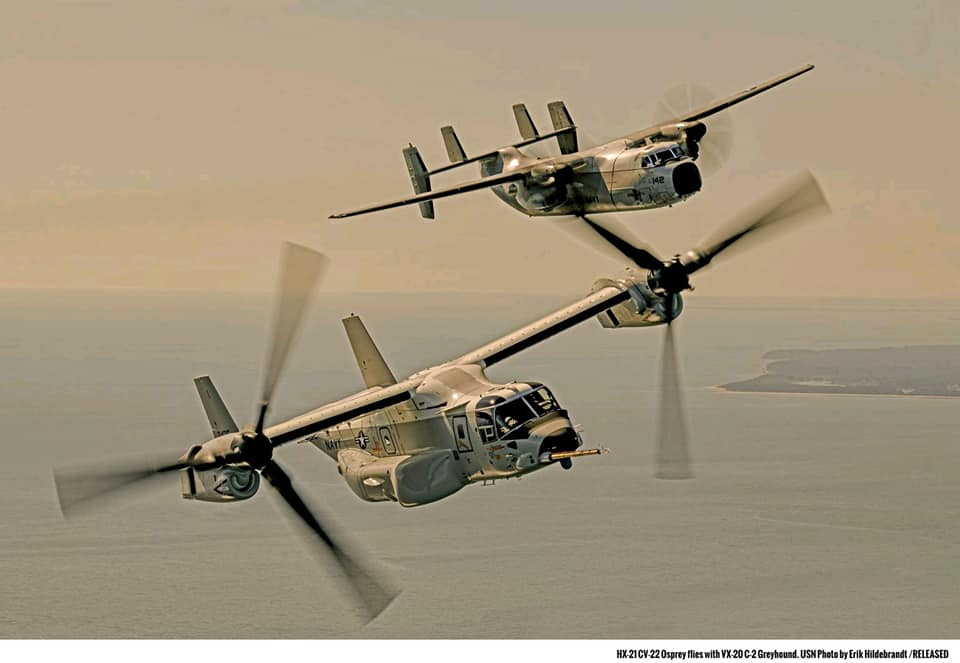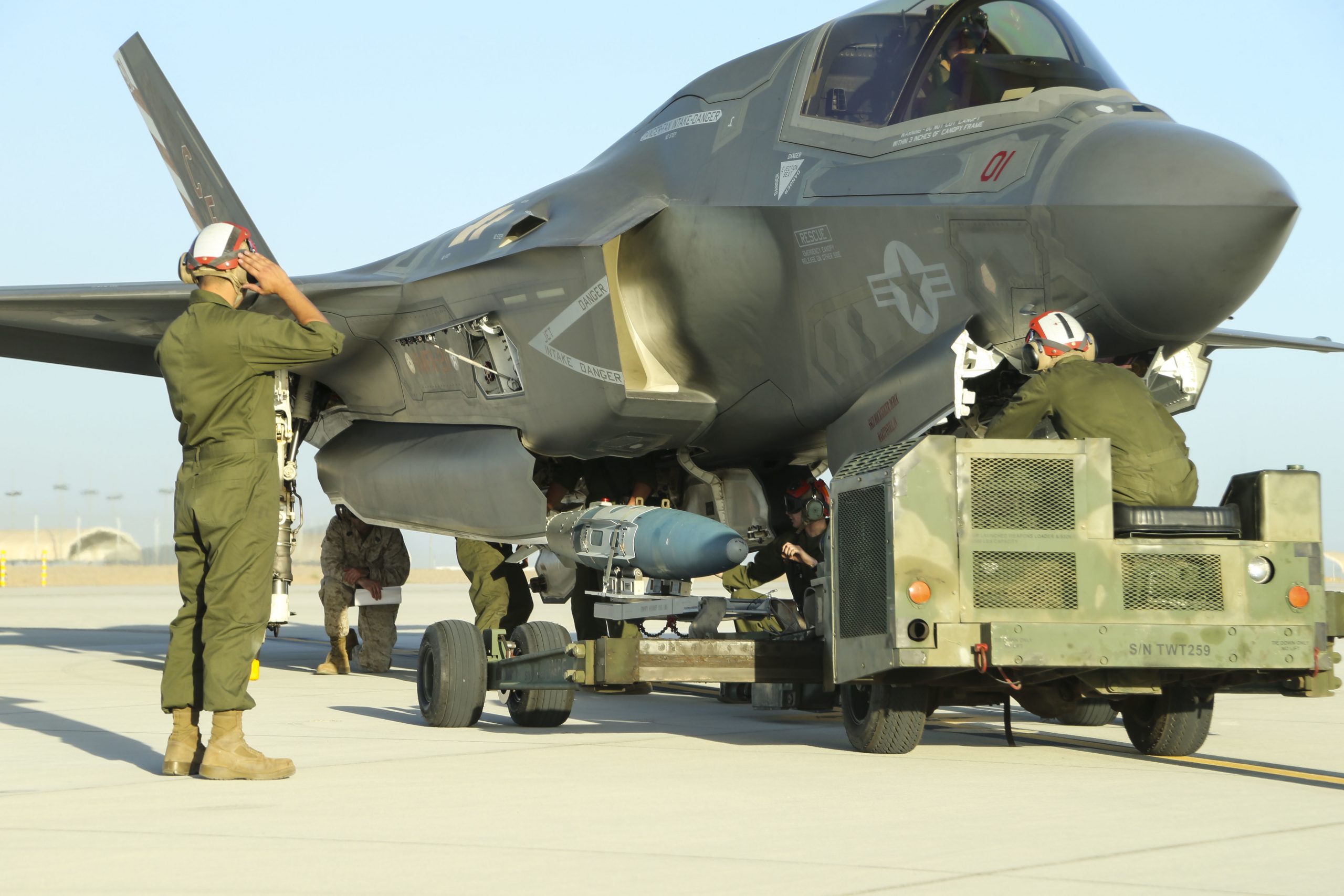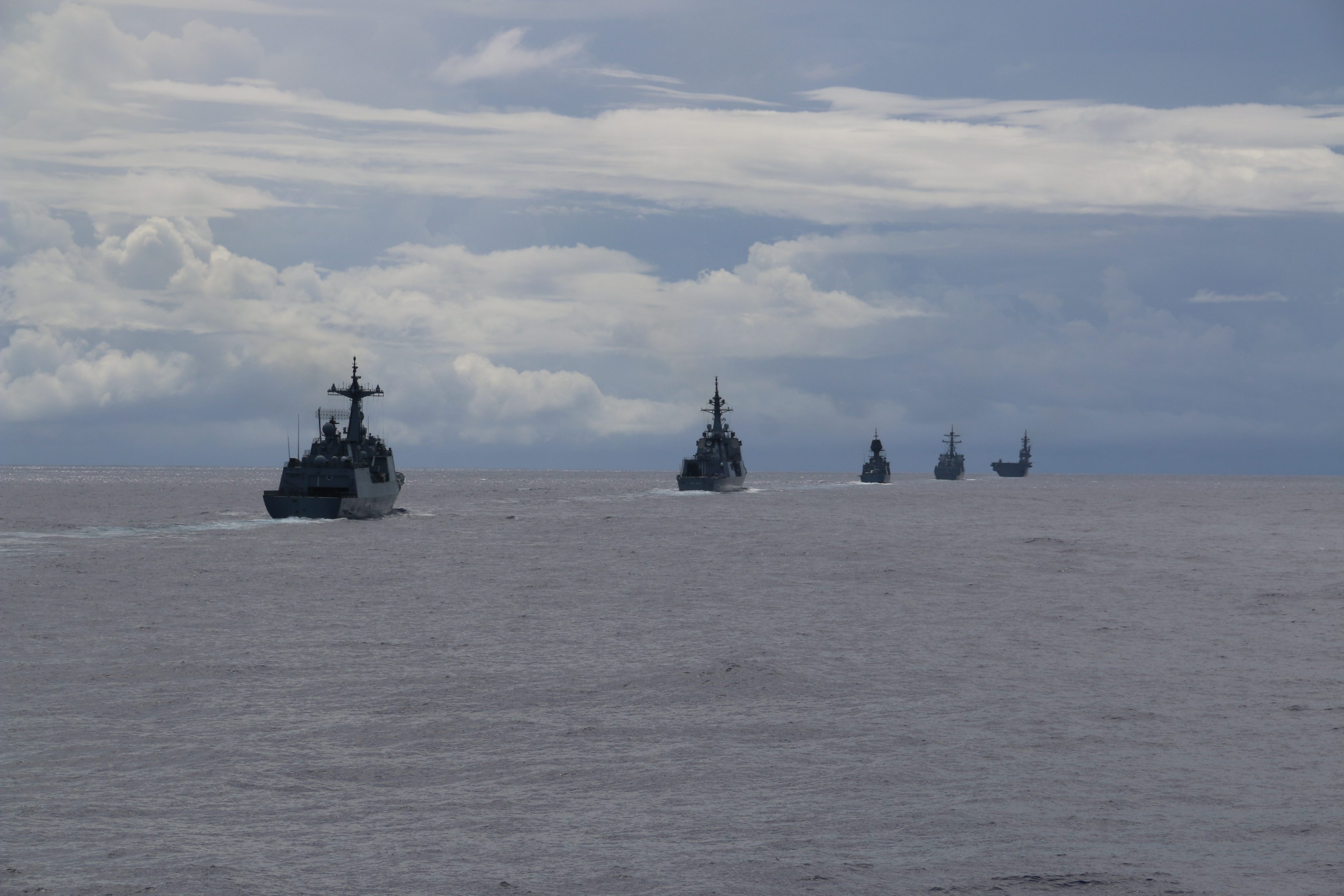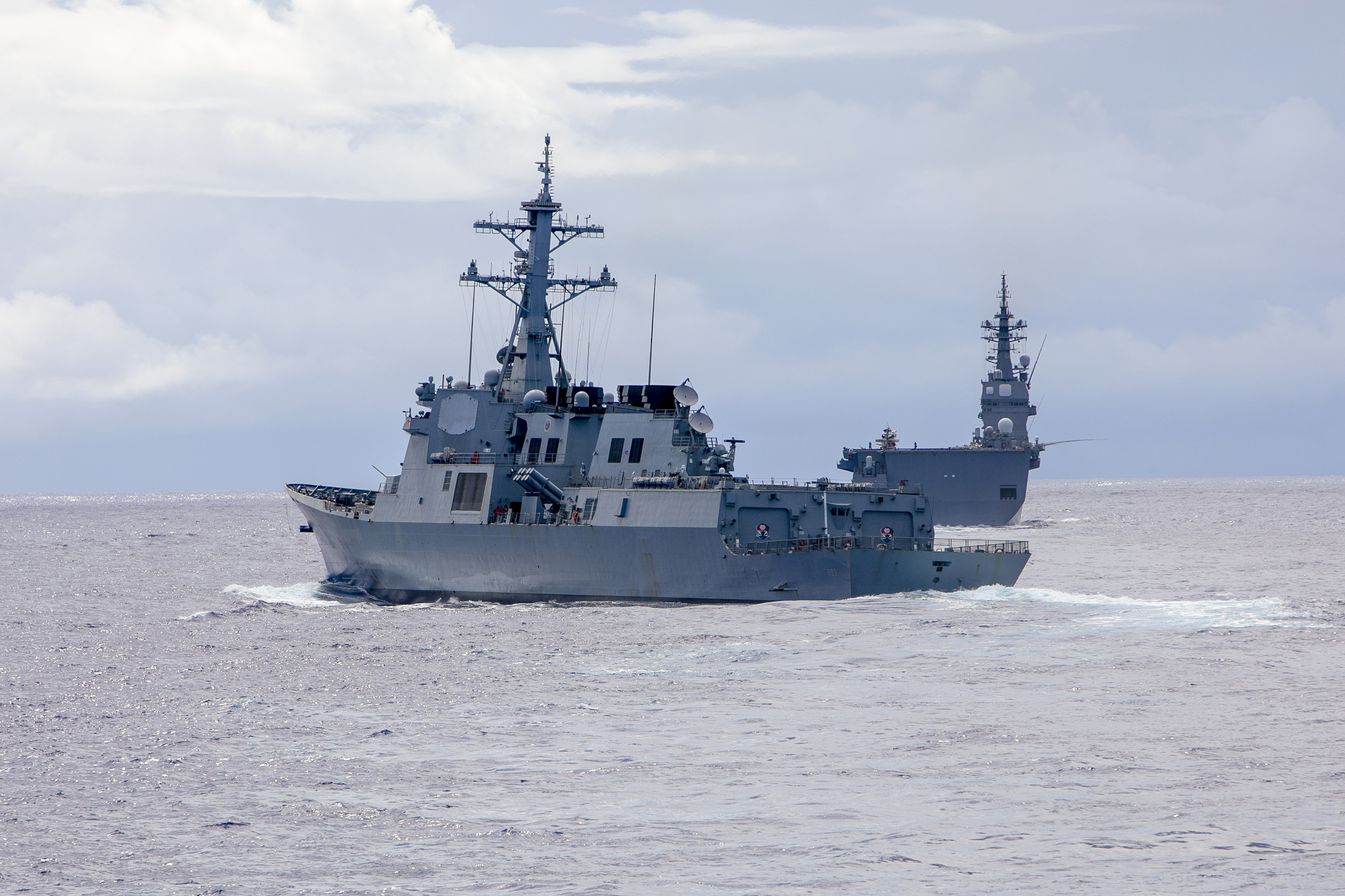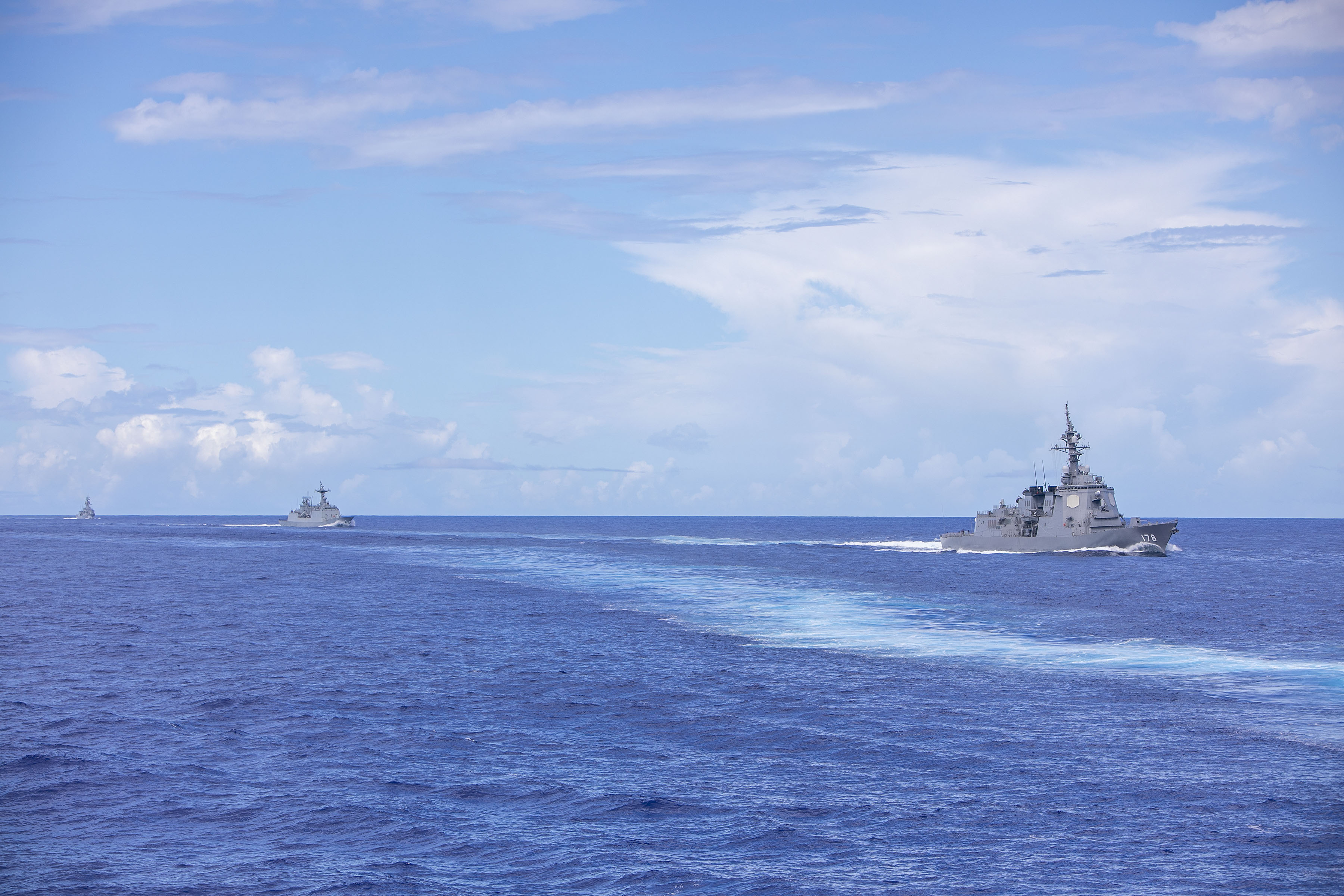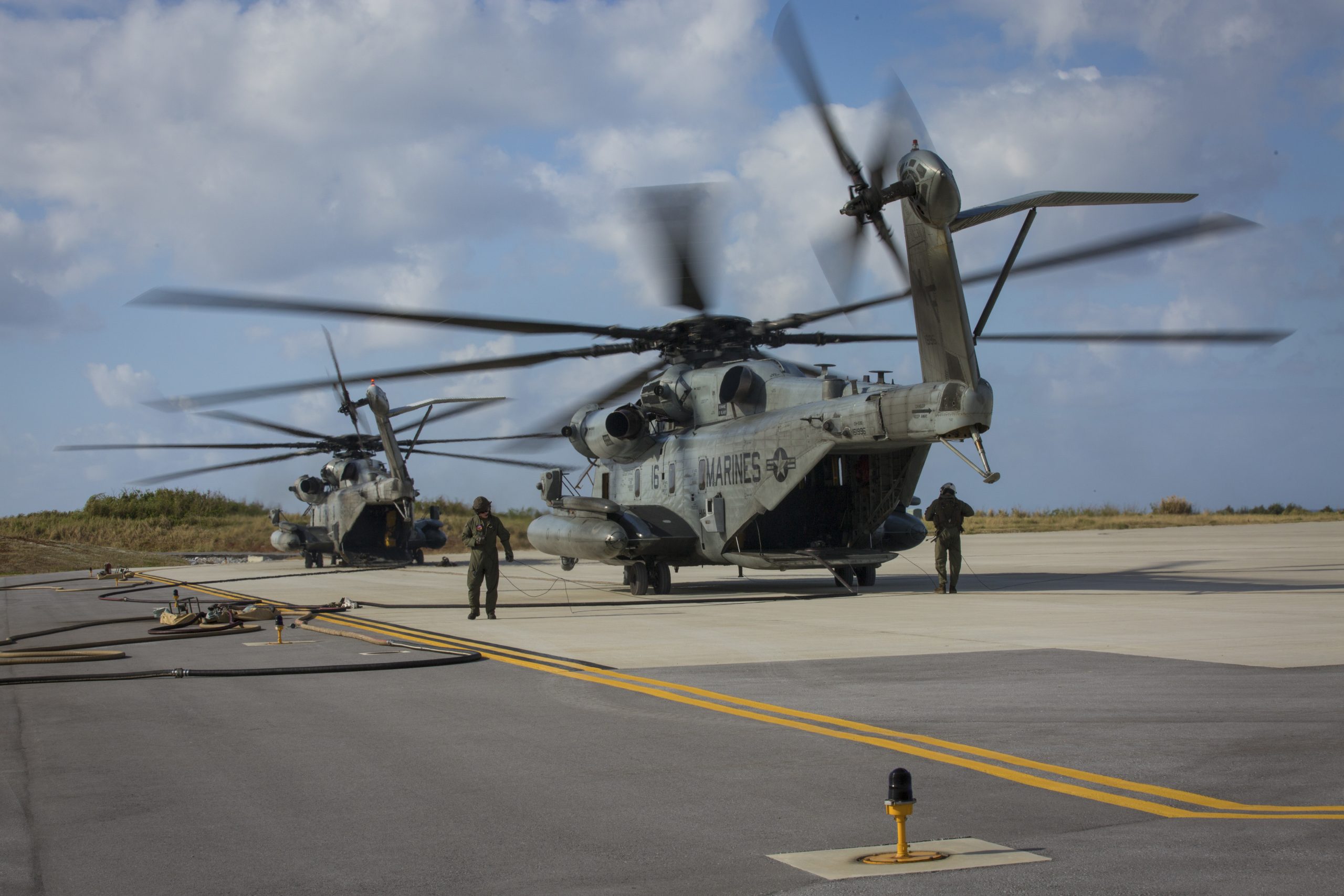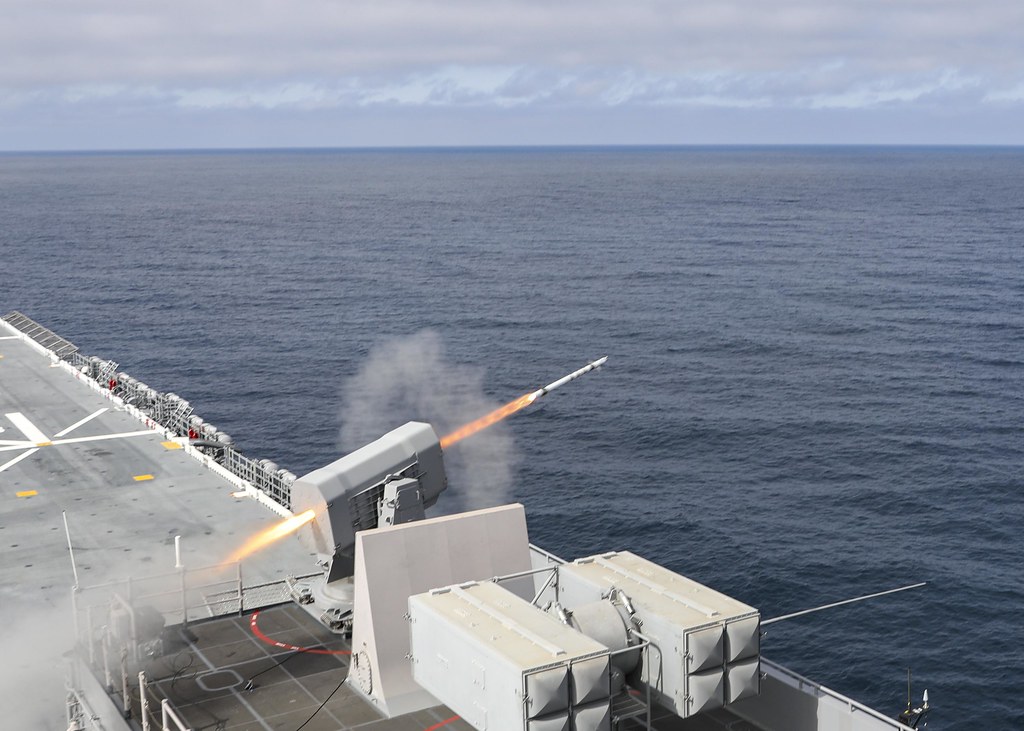By Robbin Laird
I first viewed an CMV-22B in person when attending the Reveal ceremony in Amarillo, Texas held on February 6, 2020.
But I am not stranger to the Osprey having seen my first Ospreys at Second Marine Air Wing in 2007.
At that time there were four Ospreys on the tarmac.
The plane has come a long way since then with the Marines taking it in to every clime and place with the transformational aircraft having a significant change on how the Marines operate.
Now the plane is coming in a modified form to the US Navy, and it is technically replacing the C-2 Greyhound in its carrier support role. The CMV-22B is no more a replacement for the C-2 Greyhound, than the MV-22 was for the CH-46. The MV-22 covered the functions of the CH-46 for the Marine Corps but represented a disruptive change which has transformed the USMC and its operations.
The CMV-22B will provide the functionality of the C-2 for the carrier strike group but is entering the carrier strike group at a time of profound change, and it will contribute to it.
Over the past few months, I have had a chance to discuss the coming of the CMV-22B to the large deck carrier with a number of people knowledgeable about the transition and would like to share those findings.
I have travelled to Pax River, San Diego, Naval Air Station Fallon, and Amarillo, Texas over the past few months, and would like to share what I have learned from those visits for these findings form a baseline with regard to the importance of the coming of the CM-22B to the fleet.
Pax River
I went last Fall to Naval Air Station Patuxent River and to meet with Col Matthew Kelly, who is in charge of the V-22 Joint Program Office (PMA-275). I first met “Squirt” when he was an F-35B test pilot and indeed was selected as test pilot of the year in 2011. Having come from the F-35 world, where the entire command and control (C2) and intelligence, surveillance and reconnaissance (ISR) infrastructure is being reworked, is a perfect community for the new head of the V-22 Program to come as that aircraft is undergoing a fundamental transformation.
It is often overlooked that the US Air Force Special Forces Command (AFSOC) and Marine Corps are still the only tiltrotor forces in the world. And the Osprey from the outset has demonstrated a speed and reach capability which traditional rotorcraft simply have not replicated.
At Pax River, we discussed the next phase of the evolution of the Osprey of which now the US Navy’s carrier community would become a key player as well as the Marines and the US Air Force.
The US Navy is joining Osprey Nation at the same time as the Japanese. As Col. Kelly commented: “There is no other air platform that has the breadth of aircraft laydown across the world than does the V-22. And now that breadth is expanding with the inclusion of the carrier fleet and the Japanese.
We currently have a sustainment system which works but we need to make it better in terms of supporting global operations. With the US Navy onboard to operate the Osprey as well, we will see greater momentum to improve the supply chain.”
Discussions with the US Navy’s Air Boss
After Pax River, my next discussion of the coming of the CV-22B was with the Navy’s Air Boss, Vice Admiral Miller. In a meeting in his office in San Diego a week before attending the reveal ceremony in Amarillo Texas we discussed how the Ari Wing was changing, and the impact of the coming of new platforms, like the CMV-22B. As we discussed the future of the air wing, we agreed that a way to look at the way ahead was not so much the integrated air wing, but the shaping of the integratable air wing.
What is being set in motion is a new approach where each new platform which comes into the force might be considered at the center of a cluster of changes.
The change is not just about integrating a new platform in the flight ops of the carrier.
The change is also about how the new platform affects what one can do with adjacent assets in the CSG or how to integrate with adjacent U.S. or allied combat platforms, forces, and capabilities.
We then focused on the case of the U.S. Navy replacing the C-2 with the CMV-22 in the resupply role. But the Navy would be foolish to simply think in terms of strictly C-2 replacement lines and missions. So how should the Navy operate, modernize, and leverage its Ospreys?
For Miller, the initial task is to get the Osprey onboard the carrier and integrated with CVW operations.
But while doing so, it is important to focus on how the Osprey working within the CVW can provide a more integrated force.
Vice Admiral Miller and his team are looking for the first five-year period in operating the CMV-22 for the Navy to think through the role of the Osprey as a transformative force, rather than simply being a new asset onboard a carrier.
The Reveal Ceremony
After my visit with the Air Boss, the following week I travelled to Amarillo Texas for the reveal ceremony. My assessment at the time was that I was the only outsider in attendance and had a chance while at the ceremony to talk with a wide range of attendees from the USMC, the US Navy, industry and the acquisition community. But I will highlight here three interactions which highlight the way ahead for the US Navy and its CMV-22B.
The first interaction was with Capt. Dewon “Chainsaw” Chaney, the Commander of COMVRMWING (or Fleet Logistics Multi-Mission Wing) who command three squadrons of CMV-22Bs as they are stood up. At the ceremony, Captain Chaney highlighted the coming of the new capability and what it meant for the US Navy.
“What is the status of the CODs? Every Carrier Air Wing Commander and Carrier CO has received that question numerous times from the Carrier Strike Group Commander while on deployment. And for good reason…
“The COD, or Carrier On-board Delivery, aircraft is the only long-range aerial logistics platform providing logistical support for the Carrier Strike Group, ensuring its time sensitive combat capability. Sure, there are ways to get some items to the carrier but that time lag in most cases is at the cost of readiness for the warfare commander.
“The Navy saw the need to replace the aircraft providing this critical capability years ago and embarked on multiple efforts to inform that decision. The Navy selected V-22 as the future COD platform. The first aircraft is being delivered today (well actually a week ago but who is counting). And our first deployment will be here in a blink of an eye!
“But the devil in the details with this particularly accelerated program is making sure that the fleet can man, train, and equip those at the tip of the spear potentially in harm’s way.
“As of October, last year as the Wing Commodore, I have the honor, privilege and responsibility, given to me by Vice Admiral Miller, to be the lead for the Navy’s CMV-22 community along with our partners at well into the 2040s. Delivery of this aircraft is a major milestone on the path to initial operational capability in 2021.
“The CMV-22 has the capability to internally carry the F-35C engine power module. This capability is a game changer for the Air Wing of the Future and drove the need to match up the F-35C and CMV-22 operational deployments. The first CMV-22 deployment is now less than a year from initial delivery of N3, which is scheduled for late June of this year.
“Its success is key to maintaining combat lethality for the Air Wing of the future and our Navy. CMV-22s will operate from all aircraft carriers providing a significant range increase for operations from the Sea Bases enabling Combatant Commanders to exercise increased flexibility and options for warfare dominance.
“If you’re in a fight, it’s always good to have options! Every month following the first initial deployment, there will be a CMV-22 detachment operating with a US aircraft carrier somewhere in the world….”
The Perspective of CAPT (ret.) Sean McDermott
The second interaction was with CAPT (ret.) Sean McDermott who currently iss a commercial airline pilot who served in the US Navy for 26 years. He was involved with the C-2 during the majority of his career, starting as a Greyhound pilot and eventually commanding one of the Navy’s two fleet logistics squadrons. In the final years of his service, McDermott was involved in working through options for the Navy as they considered C-2 replacements, with an eventual Osprey selection.
McDermott highlighted the potential for the CMV-22B to expand the envelope significantly for what a COD aircraft could do for the fleet.
“With the C-2 we did one thing – Carrier On-board Delivery. With the Osprey, Combatant Commanders already know the multi-mission capability of the V-22 and will be tempted to utilize them for a variety of other missions.
“This is not something that would happen with a C-2. Carrier leadership will eventually struggle to fence off their logistics assets from outside tasking.”
In other words, there is an anticipated operational demand that they will want to leverage fully the new versatile capabilities of the Osprey.
He noted that with the new platform being introduced to carrier aviation, it will be possible to leverage it to shape a greater range of capabilities for the COD asset. He noted that as the Marines began to get comfortable with the MV-22, they shaped the unique Special Purpose Marine Air-Ground Task Force (SP-MAGTF), which has become a highly demanded asset.
He argued that such innovation was certainly possible for the Navy as it worked with its new COD aircraft.
One area he noted were forward deployed locations that would benefit like operations in Bahrain. Ospreys deployed to these locations could not only better support logistics but would also have the flexibility to support other mission sets for combatant commanders.
“With the coming of the new platform into the fleet, one innovation which might be considered is how to use the new Navy Osprey as part of a broader sustainment effort encompassing Marine Corps and Navy Ospreys. It also is an area where the multi-mission capabilities of the aircraft for the Navy can be explored as well.
“In other words, where the Marines leveraged their Ospreys to build and equip SP-MAGTF, perhaps the US Navy can leverage the Bahrain anchor from which to build regional sustainment and explore ways to build out the multi-mission capabilities it would want from its CMV-22s.”
This clearly might require the Navy to consider from the outset ways to ramp up the buy and to prepare for ways in which the fleet commanders will employ it to leverage fully the aircraft capabilities, and, at the very least, utilizing its capability to provide improved logistics to Navy and Maritime Sealift Command ships.
The Perspective of the Mayor of Amarillo
The third interaction of note I had in Amarillo was with its Mayor. Neglected in any discussion of new capabilities is the contribution of the workforce which builds such a capable aircraft as the Osprey. And I asked the Mayor, why is Amarillo, Texas capable of doing so.
To be blunt, I asked here the following question: From where are these skilled workers coming from, and why is Bell here?
Mayor of Amarillo, Ginger Nelson, provided a spirited response:
“Because we want Bell here, because we have a tremendous workforce here in the Texas Panhandle,” Nelson said. We are a city fed by the small-town rural communities that surround our region. Our people are only one or two generations from having grown up on a farm or having owned their own small business. And the work ethic for our people is simply: if you are not doing it, it is not going to get done. Our work ethic is strong; and patriotism is a core value in the Texas Panhandle.”
The often-forgotten enabler of the US military is the industrial worker. But Ginger Nelson certainly has not forgotten their importance. “Bell relies on us to supply dedicated, competent workers who are ready to meet the responsibilities that include the defense of our nation.”
Visiting NAWDC
After my visit to Amarillo, my next visit involving discussing the way ahead with regard to the CMV-22B was at Fallon Naval Air Station, the home of the Naval Aviation Warfighting Development Center (NAWDC). Here this key training center is hooked up with other Navy and warfighting centers to generate the kind of innovative combat force which can defend the nation’s interests.
And new Navy air platforms coming into the force are vetted into NAWDC to shape their maximal contribution to a lethal and effective combat force. The C-2 never was a plankholder in NAWDC, but the CMV-22B will be.
According to CO of NAWDC< Rear Admiral Brophy, they will work the tactics, techniques, procedures (TTPs) for the CMV-22Bs along with Captain Chaney, as it will enter into NAWDC through the rotary wing school in NAWDC, but its ultimate location for cross-platform training, in a command increasingly focused on such training with a kill web focus, will be determined.
Visiting the North Island Air Station, San Diego
After my visit to NAWDC in early July 2020, I went to San Diego and met with the Naval Air Boss on the morning of July 13th and in the afternoon with “Chainsaw.” During my visit with the Osprey squadron, I had a chance to see the third Osprey on the tarmac, and visit the hangar being used to stand up the squadron.
In my discussion with “Chainsaw” at North Island on the 13th of July 2020, we discussed the standup of the CMV-22B squadrons.
The first squadron VRM-30 was stood up prior to the creation of the wing and its first aircraft arrived in June 2020. Captain Chaney noted that there is a two-year timeline to get a fully qualified maintenance technician or officer for the force, so that has been underway.
That training has been generated with the Marines in North Carolina, Hawaii, Kuwait, or working side by side with Marines in various locations or in the Bell-Boeing teams at the Maintenance Readiness Team in Miramar.
Captain Chaney then noted that this October, the fleet replacement squadron, VRM-50, will be stood up. It will take this squadron two years until they will be able to train new pilots. As he explained: With VRM 30, they need to get pilots ready to go fly and go on deployment.
“Whereas with VRM 50, they have to get pilots and maintainers qualified, but then they also have to figure out how to train other pilots and aircrewman in other words to establish the Navy training cycle for the aircraft.”
He noted that the Navy will approach operating its Osprey in some ways differently from the Marines, but because of the interactive working relationships any learning on the Navy side can be easily be transferred on the Marine side. “I see it as a very symbiotic relationship between the Marine Corps and us, all under the Department of the Navy.
“Clearly with the Marine Corps having the bulk of the experience right now in MV-22s, I welcome any of their lessons learned and comments about maintaining the airplane, flying the airplane, fighting with the airplane. I’m all ears, because I know that my team is still in their infancy.”
But one example of cross learning might be with regard to how the Navy will operate the load outs and off-loading of the aircraft. They are looking to have a rapid unload capability with new containers for the CMV-22B and Navy experience with the new kit might well prove of interest to the Marine Corps as well. The counterpart to VRM-30 will be VRM-40 but all three squadrons are under the Wing. The third squadron will be on the East Coast.
And as the Osprey comes to the fleet, building appropriate infrastructure is a key priority facing the Wing in the next few years. At North Island, San Diego, their first simulator will come next year, and a new hangar is being built and will be ready in 2023. But the East Coast basing solution remains to be resolved.
With regard to the standup, the Wing Commander comes from the rotary wing community; his Deputy from the C-2 community.
The challenge is blending the two into a tiltrotor force which operates at a different altitude from the C-2, can fly night shipboard missions (which the C-2 did not), and rapid, efficient shipboard operations, which has not been the core focus of the USMC and their use of the aircraft.
In short, it is clear that the CMV-22B needs to prepare for carrier operations but equally the carrier community needs to get ready for the coming of CMV-22B.


